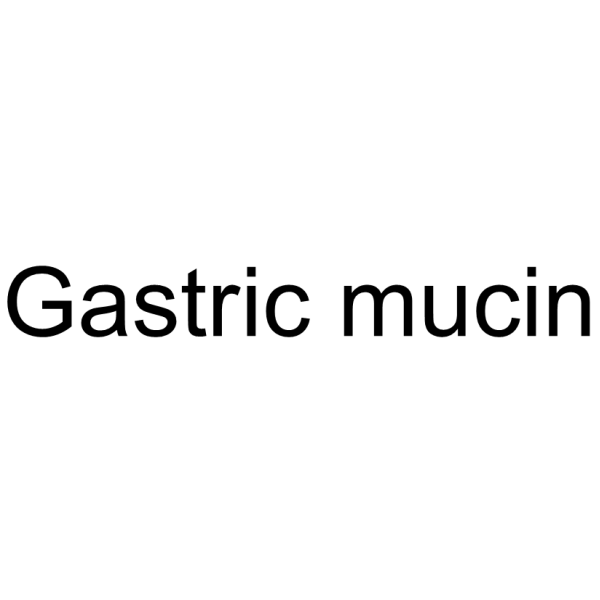keep away from moisture
Powder: -20°C for 3 years | In solvent: -80°C for 1 year
Gastric mucin is a large glycoprotein which is thought to play a major role in the protection of the gastrointestinal tract from acid, proteases, pathogenic microorganisms, and mechanical trauma.

| 説明 | Gastric mucin is a large glycoprotein which is thought to play a major role in the protection of the gastrointestinal tract from acid, proteases, pathogenic microorganisms, and mechanical trauma. |
| In vitro | Gastric mucin, a large glycoprotein, plays a crucial role in protecting the gastrointestinal tract against acid, proteases, pathogens, and mechanical damage. It is also implicated in gastric injuries caused by Helicobacter pylori, potentially leading to gastritis, peptic ulcers, and gastric cancer. Gastric mucins are classified into two categories based on histochemical properties: surface mucous cell-type mucin, secreted by surface cells, and glandular mucins, secreted by deeper mucosal cells including mucous neck, cardiac gland, and pyloric gland cells. The O-glycans within gastric mucin may act as natural antibiotics, offering protection against H. pylori infection. Additionally, gastric mucin guards the gastrointestinal epithelium by neutralizing oxidants in the lumen, despite reducing its viscoelastic properties. Studies have shown that both unaltered and pronase-treated mucin can effectively neutralize hydroxyl radicals, with no significant difference in their scavenging abilities. A concentration of 10 mg/mL of mucin is required to halve malondialdehyde production, applicable to both mucin types. |
| 分子量 | N/A |
| CAS No. | 84082-64-4 |
keep away from moisture
Powder: -20°C for 3 years | In solvent: -80°C for 1 year
DMSO: < 1 mg/mL (insoluble or slightly soluble)
H2O: < 0.1 mg/mL (insoluble)
1M NaOH: < 1 mg/mL (insoluble)
You can also refer to dose conversion for different animals. 詳細
bottom
Please see Inhibitor Handling Instructions for more frequently ask questions. Topics include: how to prepare stock solutions, how to store products, and cautions on cell-based assays & animal experiments, etc.
Gastric mucin 84082-64-4 Microbiology/Virology Antibacterial Antibiotic inhibit Inhibitor Bacterial inhibitor
